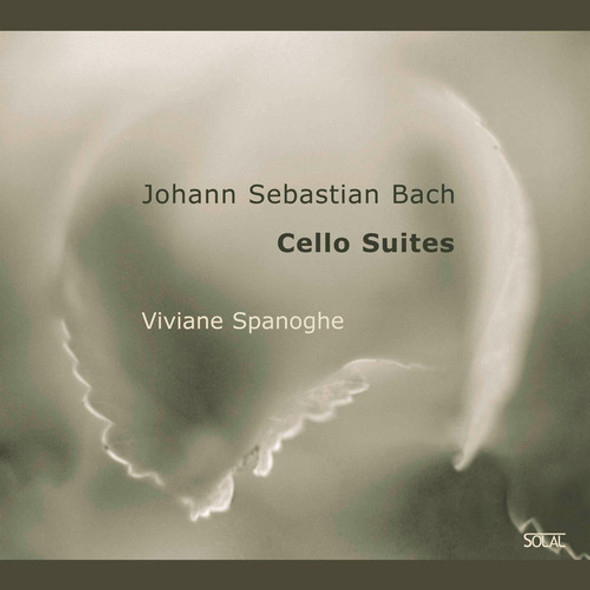NAXOS
Bach / Kliegel Cello Suites Complete CD
- SKU:
- 10559253
- UPC:
- 747313228027
- MPN:
- 8557280-81
- Condition:
- New
Description
Bach wrote his six Suites for unaccompanied cello at C?then, about the year 1720. It is thought that the first four, at least, were written either for Christian Ferdinand Abel, bass viol player at C?then, or for Christian Bernhard Linike, more probably the latter. Abel, appointed to C?then in 1715 is not known to have been a cellist, while Linike was distinguished rather as a player of the cello and in this capacity had been appointed to the musical establishment of the court in C?then in 1716, thus rejoining former colleagues from the Prussian court musical establishment, disbanded in 1713 by Friedrich Wilhelm I on his accession to his father's throne. Both musicians were friends and colleagues of Bach. The original autograph of the suites is lost and the earliest copy is that made by the Gr?fenroda organist and composer Johann Peter Kellner in about 1726. This is followed by that in the hand of Bach's second wife, Anna Magdalena, made probably in 1727 or 1728 for the Brunswick-Wolfenb?ttel chamber musician Georg Heinrich Ludwig Schwanenberger, who had visited Leipzig at the time and taken lessons in thoroughbass from Bach, for whose daughter Regina Johanne he stood as godfather. Each of the six cello suites opens with a Pr?lude. Suite No. 1 in G major, BWV 1007, has an introductory movement in which the changing harmonies are made clear in arpeggiated form. The usual Allemande and Courante are followed by a slow Sarabande, with a repeated Menuet II framing a G minor Menuet II. The suite ends, as it should, with a Gigue. Suite No. 2 in D minor, BWV 1008, opens again with an elaborate Pr?lude, ending with a series of grandiose arpeggiated chords. Once again the Allemande and Courante lead to a Sarabande and a D minor Menuet I is repeated to frame a D major Menuet II, before a lively final Gigue. Suite No. 3 in C major, BWV 1009, has a Pr?lude that is marked Presto in a slightly later source. This opens boldly with a descending scale and an arpeggio that ends on the resonant bottom string of the instrument. A relatively elaborate Allemande is paired with a simpler Courante, followed by a stately Sarabande, a well-known movement that leads to the still more familiar pair of Bourr?es, the second in C minor. The suite ends with an energetic Gigue. The fourth of Bach's cello suites, the Suite in E flat major, BWV 1010, opens, like the others, with a demanding Pr?lude. An Allemande follows, paired with a Courante, leading to a contrasting slow Sarabande. A busier first Bourr?e is followed by a second that is simpler in texture and in the same key. The last movement is a lively Gigue. The fifth and six of Bach's cello suites differ in various ways from the first four. The fifth, the Suite in C minor, BWV 1011, was originally written in scordatura, a practice sometimes found in string music of the period, with the top A string of the instrument tuned down to G. The opening Pr?lude has a slower, embellished introduction before an extended faster fugal section in triple metre, it's fugal texture largely implied. An ornamented Allemande is duly followed by it's companion Courante and a slow Sarabande that strangely avoids the chordal pattern of it's predecessors. A first Gavotte is repeated after the unusual compound rhythm of the second Gavotte and the suite ends with a Gigue in dotted rhythm. The sixth of the suites, the Suite in D major, BWV 1012, is written for a five-string instrument, with an additional top string tuned to E. It has been suggested that Bach wrote this more difficult suite for the viola pomposa, a five-string viola that found occasional use from 1725 to about 1770. It seems, however, that Bach designed this work for the violoncello piccolo, a smaller form of cello, designed for more elaborate solo work and one that he uses elsewhere. The Pr?lude opens with the characteristic sound of bariolage, as the player repeats the note D on alternate strings. The Allemande has elaborate figuration and the companion Courante again exploits the wider possible range of the five-string instrument. A Sarabande is followed by a pair of Gavottes, played in alternation, and the suite ends with the customary and here demanding Gigue.
View AllClose
1. Prelude 2. Allemande 3. Courante 4. Sarabande 5. Menuet I ; II 6. Gigue 7. Prelude 8. Allemande 9. Courante 10. Sarabande 11. Menuet I ; II 12. Gigue 13. Prelude 14. Allemande 15. Courante 16. Sarabande 17. Gavotte I ; II 18. Gigue 19. Prelude 20. Allemande 21. Courante 22. Sarabande 23. Bourree I ; II 24. Gigue 25. Prelude 26. Allemande 27. Courante 28. Sarabande 29. Bourree I ; II 30. Gigue 31. Prelude 32. Allemande 33. Courante 34. Sarabande 35. Gavotte I ; II 36. Gigue






